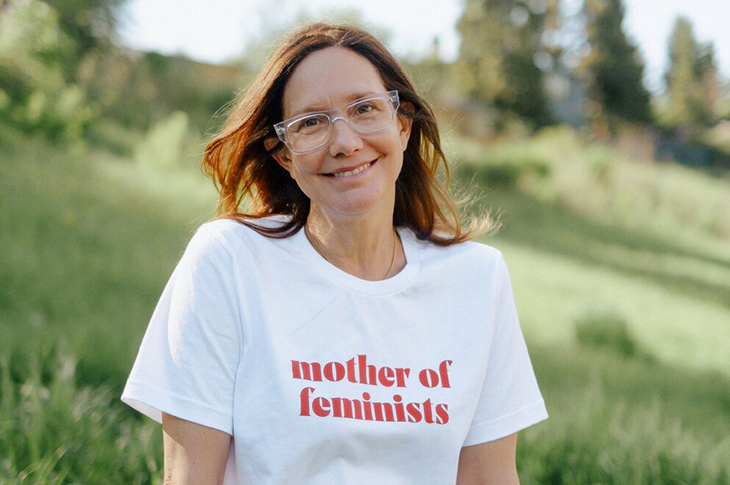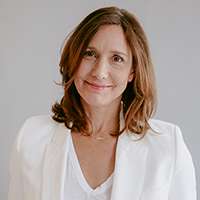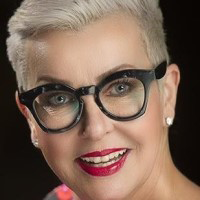A financial feminist and a tech-savvy trailblazer sign into a Zoom room...

digiTALKS
A dialogue on the evolution of technology and the impact digital transformation is having on business, industry and careers
Last week, Shelley Kuipers and Nancy Taipale joined moderator Dr. Raynie Wood, dean, SAIT's School for Advanced Digital Technology — and global education advocate — for a discussion on female-powered movements and how they’re critical to meeting the needs of digital transformation.
If you missed this latest digiTALKS dialogue, learn a little about the mindset of these innovators and advocates, what they’re watching in the tech space and get some advice for mid-career professionals looking to move into the tech industry.
 The financial feminist
The financial feminist
Shelley Kuipers — SAIT alumna (PT '87), prominent entrepreneur, investor and co-founder of feminist financial platform The51 — considers herself to be a bit of an activist.
“I want things to be better,” she says. “What’s the opportunity to change something that can be better? How can we innovate? How can we democratize something exclusive?
“Challenging the status quo has driven me for years.”
 The tech-savvy trailblazer
The tech-savvy trailblazer
Nancy Taipale built one of the first female-owned social media sites in Canada, Asknancy.ca. Starting with IBM in the mid-70s, she’s had a 40-year career in tech ranging from entrepreneur to corporate executive.
“I remember at age 25 walking into a room of totally blue suits for an industry association meeting and dinner, and realizing I’m the only woman here,” she says.
“So I decided I was going to become president of that association, and I was in two years. Part of that was I decided I needed to earn their trust, to listen to them, understand what they were going through. And it helped me immensely in my recruitment profession because that’s the only thing you’ve got to sell — confidence and trust.”
What has helped you be successful and overcome challenges in your career?
NT: Inherent values and lots of lessons from my parents. For me, what I’ve brought to every role, I had passion, I had courage, I was bold. It’s having the courage, the confidence and knowledge.
Some of it’s also intuition, a lot is having empathy. Plus, building trust, doing what you say you’re going to do — that’s really what got me through starting in a very male dominated profession to where I ended up.
SK: Along the way you have to determine which values are most important to you — for me it’s a combination of being bold and courageous, combined with an authentic and empathetic brand. Plus, having a mission built into the business.
What helps me get through challenging times? Resolve. Not quitting. Determination, and learning to surround yourself with people who will champion you. Finding your purpose.
RW: A sense of purpose resonates with me. Support networks are also important. I sit at the table with a number of strong female leaders at SAIT. And, as we look at our influences, for me it’s not just our parents, it’s our broader scope, and it’s our children — what we learn from the young adults in our life really grounds us in perspective.
What are you watching in the tech space?
SK: Fem tech is a huge opportunity. What’s really exciting is how women are redesigning the things that are important to women. It’s an amazing intersection from a capital and innovation perspective.
Also agriculture and food. The intersection of tech with farming. Canada has an opportunity to be a leader in this. I’m excited about all things agriculture.
Bobbie Racette from Virtual Gurus — this is a cool startup to watch. Laid off from the energy industry, she designed the company for herself, but it turned out she designed it for many others too. Bobbie is a trailblazer in Calgary around what’s possible.
NT: Agriculture technology excites me too — both Shelly and I grew up on a farm. With my HR background, I also think employee mental health and wellness is very important. HR used to deliver benefits and pay people, now it’s so much more than that. I’m also a big proponent of female technology.
I’m fascinated and encouraged by the tech coming out of Calgary, no one company in particular, though we’re seeing a lot about headversity. I’m encouraged reading about vaccine development — these are really important innovations and discoveries.
RW: I’m interested in identity. Release and control, security of information, I’m excited to see where that will take us. And, personal health, being able to have access to your personal health information online to make conscious, educated choices based on your partners in the medical field.
What advice do you have for mid-career changers looking to move into tech?
NT: Understand what your skills are. I guarantee whatever skills you have can be transferred into a technology role. I grew up on the business side of technology. I’m not an engineer or a technologist. That’s how I’ve built my career. Others have built it on being software engineers, data analysts. The inherent skills you possess can be transferred.
SK: Meet people and be really curious about what’s going on in tech. Tech used to be a sector, but tech lives in all sectors as well. If you’re in agriculture already, you have skills and values to bring to that technology opportunity. Marrying the experience you have to technology — that’s what creates interesting opportunities.
RW: Don’t look at what you don’t have, look at what you do have and be proud. There are a range of programs in partnership with post-secondary institutions, such as SAIT, working with Calgary Economic Development and other institutions — these programs can meet you where you’re at and help you pivot.
Plug into digiTALKS
Stay up-to-date with emerging technology trends impacting all sectors of our economy.
📅 Building what’s next: The technology behind one of the greenest homes in the world
Thursday, March 26
Skills for the Future
We prepare students for successful careers and lives.
SAIT'S
2020-2025
Strategic plan

Oki, Âba wathtech, Danit'ada, Tawnshi, Hello.
SAIT is located on the traditional territories of the Niitsitapi (Blackfoot) and the people of Treaty 7 which includes the Siksika, the Piikani, the Kainai, the Tsuut’ina and the Îyârhe Nakoda of Bearspaw, Chiniki and Goodstoney.
We are situated in an area the Blackfoot tribes traditionally called Moh’kinsstis, where the Bow River meets the Elbow River. We now call it the city of Calgary, which is also home to the Métis Nation of Alberta.
